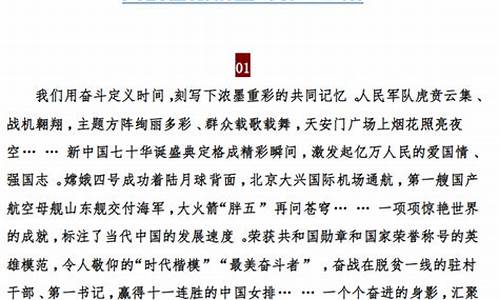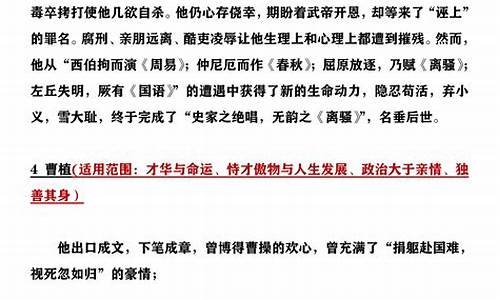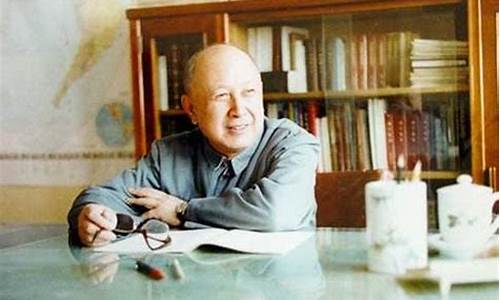关于长城的英语作文80字_关于长城的英语作文80字左右
非常感谢大家对关于长城的英语作文80字问题集合的贡献。我会努力给出简明扼要的回答,并根据需要提供一些具体实例来支持我的观点,希望这能给大家带来一些新的思路。
1.长城英文介绍信怎么写?
2.长城英文介绍 长城英文介绍范文
3.初中向外国同学写一篇英语作文关于长城的内容80字
4.关于长城的英语作文,80字左右

长城英文介绍信怎么写?
The Great Wall
The Great Wall, like the Pyramids of Egypt, the Taj Mahal(1) in India and the Hanging Garden of Babylon(2), is one of the great wonders of the world. Starting out in the east on the banks of the Yalu River in Liaoning Province, the Wall stretches westwards for 12,700 kilometers to Jiayuguan in the Gobi desert, thus known as the Ten Thousand Li Wall in China. The Wall climbs up and down, twists and turns along the ridges of the Yanshan and Yinshan Mountain Chains through five provinces--Liaoning, Hebei, Shanxi, Shaanxi, and Gansu--and two autonomous regions--Ningxia and Inner Mongolia, binding the northern China together.
Historical records trace the construction of the origin of the Wall to defensive fortification back to the year 656 B.C. during the reign of King Cheng of the States of Chu. Its construction continued throughout the Warring States period in the fifth Century B.C. when ducal states Yan, Zhao, Wei, and Qin were frequently plundered by the nomadic peoples living north of the Yinshan and Yanshan mountain ranges. Walls, then, were built separately by these ducal states to ward off such harassments. Later in 221 B.C., when Qin conquered the other states and unified China, Emperor Qinshihuang ordered the connection of these individual walls and further extensions to form the basis of the present great wall. As a matter of fact, a separate outer wall was constructed north of the Yinshan range in the Han Dynasty(206 BC--1644 BC.), which went to ruin through years of neglect. In the many intervening centuries, succeeding dynasties rebuilt parts of the Wall. The most extensive reinforcements and renovations were carried out in the Ming Dynasty (1368--1644) when altogether 18 lengthy stretches were reinforced with bricks and rocks. it is mostly the Ming Dynasty Wall that visitors see today. The Great Wall is divided into two sections, the east and west, with Shanxi Province as the dividing line. The west part is a rammed earth construction, about 5.3 meters high on average. In the eastern part, the core of the Wall is rammed earth as well, but the outer shell is reinforced with bricks and rocks. The most imposing and best preserved sections of the Great Wall are at Badaling and Mutianyu, not far from Beijing and both are open to visitors. The Wall of those sections is 7.8 meters high and 6.5 meters wide at its base, narrowing to 5.8 meters on the ramparts, wide enough for five horses to gallop abreast. There are ramparts, embrasures, peep-holes and apertures for archers on the top, besides gutters with gargoyles to drain rain-water off the parapet walk. Two-storied watch-towers are built at approximately 400-meters internals. The top stories of the watch-tower were designed for observing enemy movements, while the first was used for storing grain, fodder, military equipment and gunpowder as well as for quartering garrison soldiers. The highest watch-tower at Badaling standing on a hill-top, is reached only after a steep climb, like "climbing a ladder to heaven". The view from the top is rewarding, hoverer. The Wall follows the contour of mountains that rise one behind the other until they finally fade and merge with distant haze. A signal system formerly existed that served to communicate military information to the dynastic capital. This consisted of beacon towers on the Wall itself and on mountain tops within sight of the Wall. At the approach of enemy troops, smoke signals gave the alarm from the beacon towers in the daytime and bonfire did this at night. Emergency signals could be relayed to the capital from distant places within a few hour long before the invention of anything like modern communications. There stand 14 major passes (Guan, in Chinese) at places of strategic importance along the Great Wall, the most important being Shanghaiguan and Jiayuguan. Yet the most impressive one is Juyongguan, about 50 kilometers northwest of Beijing. Known as "Tian Xia Di YI Guan" (The First Pass Under Heaven), Shanghaiguan Pass is situated between two sheer cliffs forming a neck connecting north China with the northeast. It had been, therefore, a key junction contested by all strategists and many famous battles were fought here. It was the gate of Shanghaiguan that the Ming general Wu Sangui opened to the Manchu army to suppress the peasant rebellion led by Li Zicheng and so surrendered the whole Ming empire to the Manchus, leading to the foundation of the Qing Dynasty. (1644-1911) Jiayuguan Pass was not so much as the "Strategic pass Under the Heaven" as an important communication center in Chinese history. Cleft between the snow-capped Qilian Mountains and the rolling Mazong Mountains, it was on the ancient Silk Road. Zhang Qian, the first envoy of Emperor Wu Di of the Western Han dynasty (206 B.C-24 A.D), crossed it on his journey to the western regions. Later, silk flowed to the west through this pass too. The gate-tower of Jiayuguan is an attractive building of excellent workmanship. It has an inner city and an outer city, the former square in shape and surrounded by a wall 11.7 meters high and 730 meters in circumference. It has two gates, an eastern one and a western one. On each gate sits a tower facing each other. the four corners of the wall are occupied by four watch towers, one for each. Juyongguan, a gateway to ancient Beijing from Inner Mongolia, was built in a 15-kilometer long ravine flanked by mountains. The cavalrymen of Genghis Khan swept through it in the 13th century. At the center of the pass is a white marble platform named the Cloud terrace, which was called the Crossing-Street Dagoba, since its narrow arch spanned the main street of the pass and on the top of the terrace there used to be three stone dagobas, built in the Yuan Daynasty(1206-1368). At the bottom of the terrace is a half-octagonal arch gateway, interesting for its wealth of detail: it is decorated with splendid images of Buddha and four celestial guardians carved on the walls. The vividness of their expressions is matched by the exquisite workmanship. such grandiose relics works, with several stones pieced together, are rarely seen in ancient Chinese carving. The gate jambs bear a multi-lingual Buddhist sutra, carved some 600 years ago in Sanskrit(3), Tibetan, Mongolian, Uigur(4), Han Chinese and the language of Western Xia. Undoubtedly, they are valuable to the study of Buddhism and ancient languages. As a cultural heritage, the Wall belongs not only to China but to the world. The Venice charter says: "Historical and cultural architecture not only includes the individual architectural works, but also the urban or rural environment that witnessed certain civilizations, significant social developments or historical events." The Great Wall is the largest of such historical and cultural architecture, and that is why it continues to be so attractive to people all over the world. In 1987, the Wall was listed by UNESCO as a world cultural heritage site. Notes:1. the Taj Mahal in India 印度的泰姬陵2. the Hanging Garden of Babylon 巴比伦的空中花园3. Sanskrit 梵语4. Uigur 维吾尔语
There stand 14 major passes (Guan, in Chinese) at places of strategic importance along the Great Wall, the most important being Shanghaiguan and Jiayuguan. Yet the most impressive one is Juyongguan, about 50 kilometers northwest of Beijing.
Known as "Tian Xia Di YI Guan" (The First Pass Under Heaven), Shanghaiguan Pass is situated between two sheer cliffs forming a neck connecting north China with the northeast. It had been, therefore, a key junction contested by all strategists and many famous battles were fought here. It was the gate of Shanghaiguan that the Ming general Wu Sangui opened to the Manchu army to suppress the peasant rebellion led by Li Zicheng and so surrendered the whole Ming empire to the Manchus, leading to the foundation of the Qing Dynasty. (1644-1911)
Jiayuguan Pass was not so much as the "Strategic pass Under the Heaven" as an important communication center in Chinese history. Cleft between the snow-capped Qilian Mountains and the rolling Mazong Mountains, it was on the ancient Silk Road. Zhang Qian, the first envoy of Emperor Wu Di of the Western Han dynasty (206 B.C-24 A.D), crossed it on his journey to the western regions. Later, silk flowed to the west through this pass too. The gate-tower of Jiayuguan is an attractive building of excellent workmanship. It has an inner city and an outer city, the former square in shape and surrounded by a wall 11.7 meters high and 730 meters in circumference. It has two gates, an eastern one and a western one. On each gate sits a tower facing each other. the four corners of the wall are occupied by four watch towers, one for each.
Juyongguan, a gateway to ancient Beijing from Inner Mongolia, was built in a 15-kilometer long ravine flanked by mountains. The cavalrymen of Genghis Khan swept through it in the 13th century. At the center of the pass is a white marble platform named the Cloud terrace, which was called the Crossing-Street Dagoba, since its narrow arch spanned the main street of the pass and on the top of the terrace there used to be three stone dagobas, built in the Yuan Daynasty(1206-1368). At the bottom of the terrace is a half-octagonal arch gateway, interesting for its wealth of detail: it is decorated with splendid images of Buddha and four celestial guardians carved on the walls. The vividness of their expressions is matched by the exquisite workmanship. such grandiose relics works, with several stones pieced together, are rarely seen in ancient Chinese carving. The gate jambs bear a multi-lingual Buddhist sutra, carved some 600 years ago in Sanskrit(3), Tibetan, Mongolian, Uigur(4), Han Chinese and the language of Western Xia. Undoubtedly, they are valuable to the study of Buddhism and ancient languages.
As a cultural heritage, the Wall belongs not only to China but to the world. The Venice charter says: "Historical and cultural architecture not only includes the individual architectural works, but also the urban or rural environment that witnessed certain civilizations, significant social developments or historical events." The Great Wall is the largest of such historical and cultural architecture, and that is why it continues to be so attractive to people all over the world. In 1987, the Wall was listed by UNESCO as a world cultural heritage site.
Notes:
1. the Taj Mahal in India 印度的泰姬陵
2. the Hanging Garden of Babylon 巴比伦的空中花园
3. Sanskrit 梵语
4. Uigur 维吾尔语
长城英文介绍 长城英文介绍范文
The Great Wall of ChinaThe Great Wall of China is called the "Ten-thousand-Ii Great Wall" in Chinese.In fact, it's more than 6000 kilometres long. It winds its way from west to east, acrodeserts, over mountains, through valleys till at last it reaches the sea. It is one of the wonders of the world.The Great Wall has a history of over twenty centuries.The first part of it was built during the Spring and Autumn Period. During the Warring States Period, more walls were put up to defend the borders of the different kingdoms. It was during the Qin Dynasty that the kingdom of Qin united the different parts into one empire. To keep the enemy out of his empire, Emperor Qin Shi Huang had all the walls joined up.Thus, the Great Wall came into being.
初中向外国同学写一篇英语作文关于长城的内容80字
1、The Great Wall is located in the northern part of China, it Shanhaiguan in Bohai Bay, Hebei Province, east, west to Jiayuguan in Gansu Province inland areas. Trans-Hebei, Beijing, Inner Mongolia, Shanxi, Shaanxi, Ningxia, Gansu and other seven provinces, municipalities and autonomous regions, and total length of about 6,700 kilometers, about 13.3 thousand years, in the world, the Great Wall reputation.
The Great Wall in Chinas vast land of the north east and west lie the rolling one, imposing, as long as more than ten thousand li long wall. This is considered the worlds architectural history of the Great Wall a great miracle. Great Wall is Chinas ancient defense project is a great crystallization of ancient Chinese peoples strong determination and a high degree of wisdom in ancient China embodies the remarkable achievements of engineering technology, but also shows the Chinese nations long history.
2、长城位于中国的北部,它东起河北省渤海湾的山海关,西至内陆地区甘肃省的嘉峪关。横贯河北、北京、内蒙古、山西、陕西、宁夏、甘肃等七个省、市、自治区,全长约6700公里,约13300里,在世上有“万里长城”之誉。
万里长城在我国北方辽阔的土地上,东西横亘着一道绵延起伏、气势雄伟、长达一万多里的长墙。这就是被视为世界建筑史上一大奇迹的万里长城。万里长城是我国古代一项伟大的防御工程它凝聚着我国古代人民的坚强毅力和高度智慧,体现了我国古代工程技术的非凡成就,也显示了中华民族的悠久历史。
关于长城的英语作文,80字左右
The Great Wall of China is called the "Ten thousand Ii Great Wall" in Chinese. In fact, it' s more than 6 000 kilometres long. It winds its way from west to east, across deserts, over mountains, through valleys till at last it reaches the sea. It is one of the wonders of the world.
The Great Wall has a history of over twenty centuries. The first part of it was built during the Spring and Autumn Period. During the Warring States Period, more walls were put up to defend the borders of the different kingdoms. It was during the Qin Dynasty that the kingdom of Qin united the dif ferent parts into one empire. To keep the enemy out of his empire, Emperor Qin Shi Huang had all the walls joined up. Thus, the Great Wall came into being.
The Great Wall is wide enough at the top for five horses or ten men to walk side by side. Along the wall are watchtowers, where soldiers used to keep watch. Fires were lit on the the towers as a warning when the enemy came.
It was very difficult to build such a wall in the ancient days without any modern machines. All the work was done by hand. Thousands of men died and were buried under the wall they built. The Great Wall was made not only of stone and earth, but of the flesh and blood of millions of men.
Today the Great Wall has become a place of interest not only to the Chinese but to people from all over the world. Many of them have come to know the famous Chinese saying: "He who does not reach the Great Wall is not a true man."
长城是世界的奇迹,中国的骄傲,中国人对它了解甚多,但用英语将它描述出来恐非易事。此文描述较为详细,是非常好的背景资料。
[参考译文]
中国的长城
中国的长城汉语中常叫作“万里长城”。实际上它长 6 ooo多公里。它从西到东,穿过沙漠,越过高山,跨过深谷,蜿蜒而行,最后直到海边。它是世界上的奇观之一。
长城有两千多年的历史。最早是在春秋时期开始修筑的。战国时期,各诸候国为了保卫自己的边境,分别修筑了更多的城墙。在秦朝时,秦国把各诸侯国统一起来,成为一个帝国。为了御敌于国门之外,秦始皇令人把所有的城墙连接起来。这样,长城就形成了。
长城上面很宽,足够五匹马或10个人并排而行。沿城墙有许多烽火台,过去常有士兵驻守。敌人来时,就点燃烽火,以通知其他士兵。
没有任何现代机器,要修筑这样一座长城是非常困难的。所有的工作都不得不用手来完成。成千上万的人死了,被埋在自己修建的城墙下面。长城不仅是用石头和土筑成的,而且也是用数以百万计的人的血肉筑成的。
今天,长城不仅对中国人,而且对来自全世界各地的人们来说都是一处名胜。其中许多人都已知道这句中国名言:“不到长城非好汉”。
The
Great
Wall
of
China
The
Great
Wall
of
China
is
called
the
"Ten-thousand-Ii
Great
Wall"
in
Chinese.In
fact,
it's
more
than
6000
kilometres
long.
It
winds
its
way
from
west
to
east,
across
deserts,
over
mountains,
through
valleys
till
at
last
it
reaches
the
sea.
It
is
one
of
the
wonders
of
the
world.
The
Great
Wall
has
a
history
of
over
twenty
centuries.The
first
part
of
it
was
built
during
the
Spring
and
Autumn
Period.
During
the
Warring
States
Period,
more
walls
were
put
up
to
defend
the
borders
of
the
different
kingdoms.
It
was
during
the
Qin
Dynasty
that
the
kingdom
of
Qin
united
the
different
parts
into
one
empire.
To
keep
the
enemy
out
of
his
empire,
Emperor
Qin
Shi
Huang
had
all
the
walls
joined
up.Thus,
the
Great
Wall
came
into
being.
译文: 中国的长城汉语中常叫作“万里长城”。实际上它长6
ooo多公里。它从西到东,穿过沙漠,越过高山,跨过深谷,蜿蜒而行,最后直到海边。它是世界上的奇观之一。
长城有两千多年的历史。最早是在春秋时期开始修筑的。战国时期,各诸候国为了保卫自己的边境,分别修筑了更多的城墙。在秦朝时,秦国把各诸侯国统一起来,成为一个帝国。为了御敌于国门之外,秦始皇令人把所有的城墙连接起来。这样,长城就形成了。
好了,今天关于“关于长城的英语作文80字”的话题就讲到这里了。希望大家能够通过我的介绍对“关于长城的英语作文80字”有更全面的认识,并且能够在今后的实践中更好地运用所学知识。如果您有任何问题或需要进一步的信息,请随时告诉我。
声明:本站所有文章资源内容,如无特殊说明或标注,均为采集网络资源。如若本站内容侵犯了原著者的合法权益,可联系本站删除。












